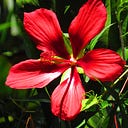PHOTOGRAPHY | BIRDING
Birds teach me photography
From being a novice photographer, how birding helped me learn the craft and practice photography
In my childhood days, my knowledge of birds was very scant. I knew the bird which made the sound “caw, caw” was the crow, and the bird which made “coo, coo” was the skylark. Rest all birds which I saw up the tree I simply referred them as sparrows — may be a big sparrow or small sparrow. Be it a sunbird or a bulbul or a flowerpecker or a hoopoe everything was just a sparrow for me.
Some fifteen years back I got myself a digital camera. As an absolute noob, my initial months in photography were mostly confined to landscapes and interiors. Then slowly the repertoire increased to include animals, action photography, and portraits and slowly it veered toward bird photography. Once I started seeing those bird photographs from my camera on the computer screen, my enthusiasm for birds and birding started building up. From those sparrow days, I came a long way by becoming conversant with their names, distinguishing a male from a female, and so on.
If you are into bird photography, you may know already, it is not easy to do bird photography. Birds are swift. They are shy. They are reclusive. No damn bird waits and poses for a decent portrait. So trying to shoot birds quickly drove home the point that I need to be on top of my photography skills and gear to get decent shots. I need to know the nitty-gritty of my camera and lens well, my fingers should have the muscle memory to do the setup required in my camera in a jiffy. Any slight delay can miss my chance to capture the bird as they are prone to fly off even if they sense a fig of movement. Hence started my journey towards mastery of my photography skills and I have no qualms in admitting that birds helped me make strides in this journey.
I started learning many things about photography and practiced them shooting birds. For instance the concept of “depth of field” in photography. Simply put depth of field controls the amount of photo that is in focus. When we take birds, it will be good to put the bird in focus and blur the background to get a really good portrait of the bird.
When I saw the peacocks perched on an iron railing beside a forest track, in my imagination I first visualize how the photo should appear. I want the peacock to be solely on focus, the rest of the image — be it forest track, greenery in the background, or iron railing behind the birds all should be blurred. So I play with the aperture on my camera and make it a wide aperture to keep the focus on the peacocks, and blur the background resulting in a good depth of field. Thank you peacocks! for being subjects for my depth-of-field experiments.
Once I started getting reasonable portrait shots, my aspirations grew more. Now I wanted to get shots of the bird in the air, with the right focus on the moving subject. That’s when I learned about “shutter speed” and how a higher shutter speed helps to get the focus on a moving subject without causing a shake.
Armed with the know-how of shutter speed, in my next birding trip I decide to focus on a Sandpiper standing by a water body. I adjust my shutter speed, keep the camera focus on the sandpiper and wait for it to take off. As it begins its flight with my high shutter speed I snap the bird to get that perfect in-flight shot. Those drops of water dripping from its feet further add grandeur to the shot. Thanks to the magic of shutter speed and thanks to the sandpiper for being my perfect practice subject.
Then the greedy photographer in me wants to take it to the next level. I want to capture the bird in flight, flap by flap, as the bird flaps its wings. I learned about “burst mode” photography. Burst mode is a continuous shooting mode where the camera captures several photos in quick succession. So in my next birding expedition armed with the understanding of burst mode, I am eager for a succulent shot or rather a series of shots of a bird in flight. This time I was near a lake and my subject for the day was an Ibis. With the burst mode, I could capture a series of photos, frame by frame showing a flying bird. Here are two frames from the burst.
As my photography toolbox is getting stacked with new tools, I wanted to push myself to newer terrains in photography. Next up, I learn about “bokeh”. I was thrilled to try a bokeh on a bird portrait. A portrait with a bokeh background is eye candy. If you don’t know what I mean by bokeh, let me show you one first.
Those white circles in the background of the eagle are the bokeh. Bokeh enhances the charm of portrait photos. Creating this bokeh is just a combination of good aperture and setting the right direction to compose the shot.
If I reflect on my photographic journey so far, I can say that birds have given a fillip to my fledgling photography skills. Now every time I see a bird, my curiosity is piqued and I try to identify the bird by its correct name.
Not everything is a sparrow after all.
Thanks for the great prompt Dennett — I could explore my connection with birds by writing this post.

